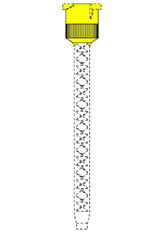
The shape of things to come: the Court of Rome provides guidance on the distinctive character of shape and colour trademarks
Legal context
Pursuant to Article 7 (1)(b) and (e) of Regulation (EU) No. 2017/1001 (‘EUTMR’):
“The following shall not be registered:
[…]
(b) trade marks which are devoid of any distinctive character;
[…]
(e) signs which consist exclusively of:
(i) the shape, or another characteristic, which results from the nature of the goods themselves;
(ii) the shape, or another characteristic, of goods which is necessary to obtain a technical result;
(iii) the shape, or another characteristic, which gives substantial value to the goods”.
Pursuant to Article 7 of the Italian Intellectual Property Code (‘IIPC’):
“A trademark may consist of any signs capable of being represented graphically, and in particular […] the shape of goods or of their packaging, the color combinations or tones, provided that such signs are capable of distinguishing the goods or services of one undertaking from those of other undertakings”.
Pursuant to Article 9 of the IIPC:
“Signs shall not be registered as trademarks if they consist solely of the shape dictated by the nature of the product, the shape of the product necessary to obtain a technical result, or the shape that gives substantial value to the product”.
Facts
SULZER MIXPAC AG (‘Sulzer’), a company active in the dental implantology sector, is specialized in the production and supply of dental materials. Among its products, Sulzer offers the Mixpac T-Mixer, a “mixing tip” system used to mix dental materials and avoid waste. This product has a peculiar shape and is available in different colours.
The case concerned Sulzer’s precautionary proceedings before the IP Specialised Division of the Court of Rome, against the dental equipment manufacturing company Vannini Dental Industry S.R.L. (‘Vannini’).
Sulzer sued Vannini to prevent the use of signs identical or similar to its Italian registered shape trade mark registration numbers 302017000057775 and 302018000034295 for the production, import, commercialisation, sale and any other infringing use.

302017000057775

Sulzer’s exclusive rights covered, in particular, the coloured feature (yellow or turquoise) of the dome characterized by a “cylindrical shape with a smooth lower part and a central part slightly indented”.
Before diving into the reasoning of the Court, it is important to underline the pivotal importance of PI proceedings in Italy. In fact, its main function is to provisionally secure the outcome of future proceedings on the merits when specific and urgent circumstances would compromise its effectiveness
In other words, to obtain an injunction from the Court, the claimant needs to prove:
- the prima facie validity and infringement of the enforced IP right (fumus boni iuris),
- the urgency to obtain the requested measures (periculum in mora).
The decision
In rejecting Sulzer’s claims, the Court made the following reasoning on the protection of shape trade marks.
Firstly, the main function of a trade mark is to identify the source of the product, enabling consumers to distinguish the goods as originating from a particular undertaking. For shape trade marks, this may be problematic since consumers are unlikely to perceive the features of a product as a clear evidence of its origin. To solve this problem, according to the well-established case law, to be a trademark the shape has to be unusual, arbitrary and fanciful.
This is the reason why, although the distinctive character of shape trademarks should be assessed using the same criterions as those applicable to the other categories of trademarks, consolidated EU case-law has held that, when it comes to shape and colour trade marks, the distinctiveness is related to the goods or services for which the trade mark registration is sought.
In fact, while the public normally understands word or figurative trade marks as distinctive elements of the origin of the product, this does not apply when the sign can be confused with the external appearance of the product, as it occurs with its shape or colour.
In particular, the shape of the product must be able to attract attention and imprint itself in the memory of the consumer without the need for an analytical or comparative examination and without having to pay particular attention to it.
If follows that signs constituted by a combination of elements that are obvious and typical for the goods to which they refer may not be registered as shape marks.
Moreover, as for colour marks, given that they exist in a limited number, the primary requirement is to protect the general interest in not unduly restricting the availability of colours for other operators.
In light of the above, the Court held that Sulzer’s trade marks correspond exactly to the product. Therefore, the sign is incapable of acting as a badge of trade origin as what the claimant seeks to protect as a trade mark coincides with the nature and aspect of the goods.








